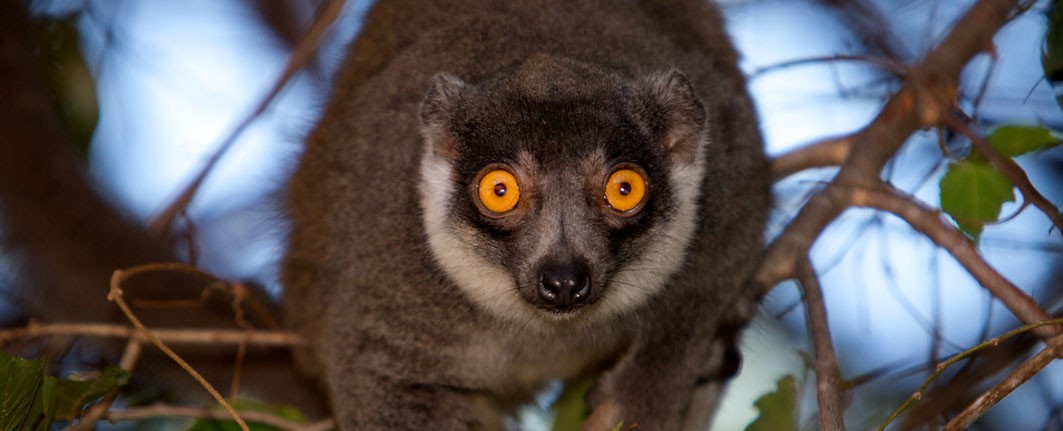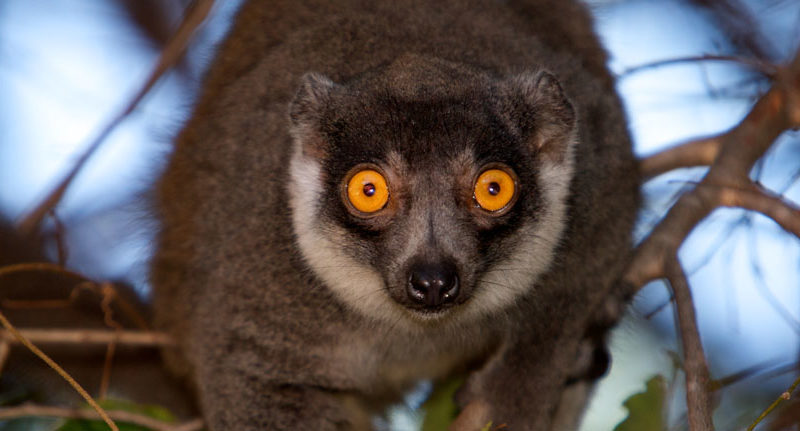
Madagascar Woolly Lemurs – The Enigmatic Nocturnal Primates of Madagascar
Introduction to Madagascar Woolly Lemurs
Madagascar woolly lemurs are fascinating primates that belong to the family Indriidae, which also includes sifakas and the indri. Known locally as avahi, these small nocturnal lemurs play a vital role in Madagascar’s fragile ecosystem. Unlike their larger relatives, Madagascar woolly lemurs are smaller in size, active at night, and easily recognized for their unique behaviors and social structures.
Characteristics of Madagascar Woolly Lemurs
Madagascar woolly lemurs are adapted to a vertical clinging and leaping lifestyle. They can leap distances of up to 10 meters through the dense forest canopy, a remarkable skill for their size. Key identifying traits include:
-
White stripes on the back of their thighs
-
Sluggish movement due to a leaf-based diet
-
High-pitched “avahi” calls and quavering whistles
-
Family groups sleeping huddled together during the day
These traits make them distinct from sportive lemurs and dwarf lemurs, which share the same forests but differ in behavior and posture.
Distribution of Madagascar Woolly Lemurs
The woolly lemurs of Madagascar are distributed across different types of forests on the island:
-
Eastern Rainforests: Six species, including the Eastern Woolly Lemur (Avahi laniger), are found in humid rainforests.
-
Northern Madagascar (Sambirano): One species inhabits this unique ecosystem.
-
Western Dry Forests: Two species, including the Western Woolly Lemur (Avahi occidentalis), thrive in drier habitats.
Their presence across diverse forest ecosystems highlights the ecological importance of woolly lemurs in maintaining forest health.
Behavior and Social Structure of Woolly Lemurs
The woolly lemurs are primarily leaf-eaters, which makes them less energetic compared to other lemurs. Their diet is nutrient-poor, resulting in slower movements and longer resting periods.
-
Sleeping habits: They sleep huddled in small family groups during the day.
-
Reproduction: A single young is born in August or September.
-
Calls: Their distinctive vocalizations include both grunts and descending whistles, serving as communication between group members.
Where to See Madagascar Woolly Lemurs
For travelers and wildlife enthusiasts, spotting a woolly lemur is an unforgettable experience. Some of the best places include:
-
Andasibe Area (Eastern Woolly Lemur): Found at day roosts and during night walks.
-
Ankarafantsika National Park (Western Woolly Lemur): Frequent sightings in the dry deciduous forests.
-
Ranomafana National Park (Peyriéras’ Woolly Lemur): Occasional sightings in this lush rainforest.
Local guides often point out these elusive lemurs during guided treks, making national parks the best spots for eco-tourism encounters.
Conservation Status
As with many lemur species, woolly lemurs face serious threats:
-
Deforestation: Slash-and-burn agriculture and logging destroy their habitats.
-
Hunting: Although less targeted than larger lemurs, hunting still poses risks.
-
Climate change: Altered rainfall patterns affect food availability.
Conservation efforts, including ecotourism, national park protection, and community-based initiatives, are essential to safeguard these rare primates.
Conclusion: Protecting Madagascar Woolly Lemurs
They are unique representatives of the island’s extraordinary biodiversity. From their nocturnal lifestyle to their family huddles and haunting calls, they offer a glimpse into the richness of Madagascar’s wildlife. Protecting their habitats not only preserves these remarkable creatures but also ensures the survival of Madagascar’s ecosystems for generations to come.
Related research:
-
Woolly lemur Madagascar
-
Eastern woolly lemur
-
Western woolly lemur
-
Avahi lemur
-
Nocturnal lemurs of Madagascar
-
Madagascar rainforest animals
-
Lemurs in Madagascar national parks
HT AGENCY TOURS
Luxury Madagascar with the best luxury African safari tours packages. Discover your next perfect destination with HT Agency Tours

